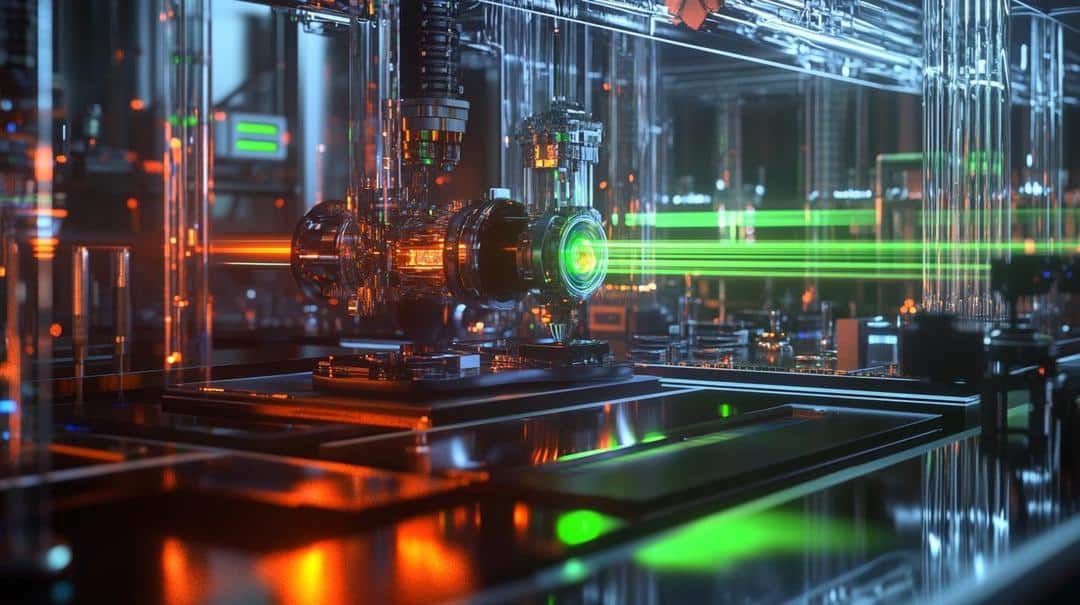Have you ever wondered what makes lasers in cutting-edge industries like healthcare, defense, and telecommunications so effective? The answer lies in rare earth laser materials—a group of superstars in the material science world that power some of the most advanced laser systems.
What's Inside
What Are Rare Earth Laser Materials?
Rare earth laser materials represent a fascinating class of elements from the lanthanide series that have revolutionized laser technology. These remarkable materials are characterized by their unique rare earth elements, including neodymium, erbium, and ytterbium, which serve as critical active mediums in laser systems.
At their core, rare earth laser materials are distinguished by their exceptional optical properties. Unlike traditional laser materials, these elements can:
- Absorb and emit light across wide spectral ranges
- Maintain remarkable chemical stability
- Generate highly efficient energy transfer mechanisms
The Unique Properties of Rare Earth Laser Materials
The optical characteristics of rare earth laser materials set them apart from conventional laser mediums. Key properties include:
Optical Performance
- Exceptional absorption and emission spectra
- Precise energy-level structures that enable efficient light conversion
- Ability to generate coherent light with minimal energy loss
Material Characteristics
- High chemical stability under intense light conditions
- Compatibility with multiple laser configurations:
- Solid-state lasers
- Fiber lasers
- Semiconductor laser systems
Why Are Rare Earth Laser Materials So Important in Laser Technologies?
Rare earth laser materials have transformed laser technology through several critical advantages:
- Extraordinary efficiency in producing high-intensity, coherent light beams
- Capability to generate precisely tailored emission wavelengths
- Significantly reduced energy consumption compared to alternative laser mediums
- Remarkable versatility across diverse laser platform designs
The Benefits of Using Rare Earth Laser Materials
Compared to traditional laser technologies, rare earth materials offer substantial improvements:
- Superior performance metrics
- Enhanced precision and operational stability
- Extended device operational lifespans
- Reduced heat generation, improving overall system safety and scalability
Common Applications of Rare Earth Laser Materials in Industry
Telecommunications
Rare earth-doped materials play a crucial role in fiber optic communication systems by:
- Amplifying optical signals
- Improving overall bandwidth capabilities
- Enhancing signal transmission quality
Healthcare
Medical applications leverage rare earth laser materials in:
- Surgical procedures
- Precision skin resurfacing techniques
- Advanced ophthalmological interventions like LASIK surgery
Defense
Military technologies utilize these materials for:
- High-powered laser system development
- Target detection and designation
- Advanced countermeasure technologies
Industrial Manufacturing
Manufacturing processes benefit from rare earth laser materials through:
- Precision laser cutting
- Advanced welding techniques
- High-accuracy marking and engraving systems
Scientific Research
Scientific applications include:
- Experimental laser system development
- Spectroscopic analysis
- Ultrafast laser technology research
Rare Earth Laser Materials vs. Other Laser Media
A comparative analysis reveals significant advantages:
- Superior efficiency compared to semiconductor and dye lasers
- Greater wavelength versatility
- Enhanced power scalability
Limitations include:
- Potentially higher production costs
- Complex material sourcing requirements
How Rare Earth Laser Materials Are Shaping Future Technologies
Emerging technological frontiers showcase the potential of rare earth laser materials:
- Quantum technology development
- Advanced communication system design
- Green laser technology innovations
- Compact, high-power laser systems for space exploration
Conclusion
Rare earth laser materials have become the backbone of modern laser technologies, influencing industries like telecommunications, healthcare, and defense. Their unparalleled properties—high efficiency, precision, and wavelength versatility—make them indispensable. As laser technologies continue to evolve, these materials will likely remain at the heart of innovation, shaping both scientific research and industrial applications.
FAQs
What are rare earth elements used in laser materials?
Rare earth elements such as neodymium (Nd), erbium (Er), and ytterbium (Yb) are commonly used in laser media due to their unique optical properties, enabling efficient light amplification and tailored wavelengths.
Why are rare earth-doped lasers more efficient?
Rare earth-doped lasers offer high energy efficiency due to their ability to absorb light at specific wavelengths and emit highly coherent and intensified beams with minimal energy loss.
What industries benefit most from rare earth laser materials?
Industries like telecommunications (fiber optics), healthcare (surgical lasers), defense (military-grade lasers), and manufacturing (laser cutting and welding) benefit significantly from these materials.
Are rare earth laser materials expensive?
The cost of rare earth laser materials can be high due to the specialized extraction and refinement processes. However, their performance and longevity often justify the investment in critical applications.
How do rare earth lasers differ from traditional lasers?
Rare earth lasers often provide superior energy efficiency, beam quality, and operational lifespans compared to traditional lasers, though costs and availability of materials may pose challenges.


Dustin
Driven by a fascination with rare earth elements and their role in powering modern tech and engineering marvels. A true car and tech enthusiast, he loves exploring how these hidden heroes fuel our most exciting innovations.
You Might Also Like…